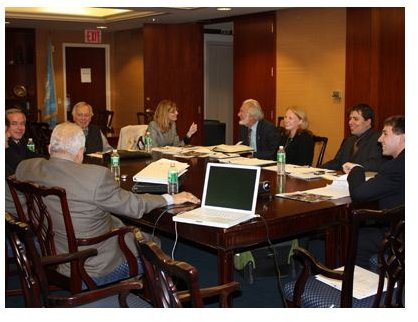Multi-Party Negotiations – Meeting the Challenges & Finding Resolution
The negotiation process is always challenging, and when there are more than two parties at the negotiation table these challenges swell up to an unmanageable level. Multi-party negotiations are undoubtedly the most difficult to manage, since every party comes in with a different perspective – adding a new dimension to the negotiation process. The key to beating these challenges is to understand them in advance and have remedial measures implemented before as well as during the negotiation.
Challenges Encountered during Multi-Party Negotiations
Even with just two parties involved in a negotiation, there are a multitude of dimensions that need to be addressed. And as and when, a new party enters into the negotiation these dimensions grow up exponentially. Multiparty negotiations are more complex to handle than a two party negotiation.
Here’s a list of some of the challenges experienced when there are more than two parties participating in a negotiation.
Differences in Objectives, Goals and Interests
Every party has its unique objectives and goals, that it wishes to accomplish through the negotiation. It’s quite obvious that every party will try to guide the negotiation using various approaches towards fulfilling its individual interests. As a result the negotiation gets stretched and it fails to reach an acceptable resolution. Each party tries to maneuver the negotiation into a different direction so as to satiate its individual objectives and goals. To sort this out, all participating teams must analyze the goals and objectives of each party and should try to find common grounds on which they can be clubbed together. This will make the list of goals considerable shorter, while still ensuring that every party’s goals gets a fair amount of importance during the negotiation.
Different Schedules and Timelines
It’s very unlikely that all the parties in a multiparty negotiation will have the same schedule and timeline. Accordingly, those with longer timelines may show reluctance in expediting the negotiation process while those with shorter timelines will be eager to get
over with the negotiation at the earliest possible opportunity. To avoid this, a proper negotiation schedule should be set up with a clearly established final due date, during the very first meeting itself. Further, every party must be sent reminders before each successive negotiation meeting.
Off-track and Chaotic Discussions
With too many parties participating in the negotiations it’s quite likely that the discussion meetings may go off-track and chaotic, unless regulated properly. For this, a facilitator should be appointed beforehand, who will guide and mediate the entire negotiation process. It’s best to go in for a third party negotiator, who has no vested interest in any of the parties or in the resource being negotiated.
A No-Agreement Situation
With too many stakeholders, it’s common to reach a no agreement scenario during the negotiation. The negotiating parties must lay down how this type of a no-agreement situation will be handled. One way to handle this situation is to have the facilitator act as the ultimate decision maker in case of non-agreement, or alternatively elaborate decision making techniques like Delphi method or multi-party voting may be used to arrive at a final decision.
These are some of the major hurdles encountered during multiparty negotiations, but with the remedial measures that we’ve mentioned here it shouldn’t be a problem to manage these challenges.
References & Credits:
- https://galimagroup.com/wordpress/tag/cross-functional/
- https://www.negotiations.com/articles/multiparty-solutions/
- https://negotiationguidance.com/2009/12/08/the-special-challenges-of-multi-party-negotiations-part-1/
Image Credit:
